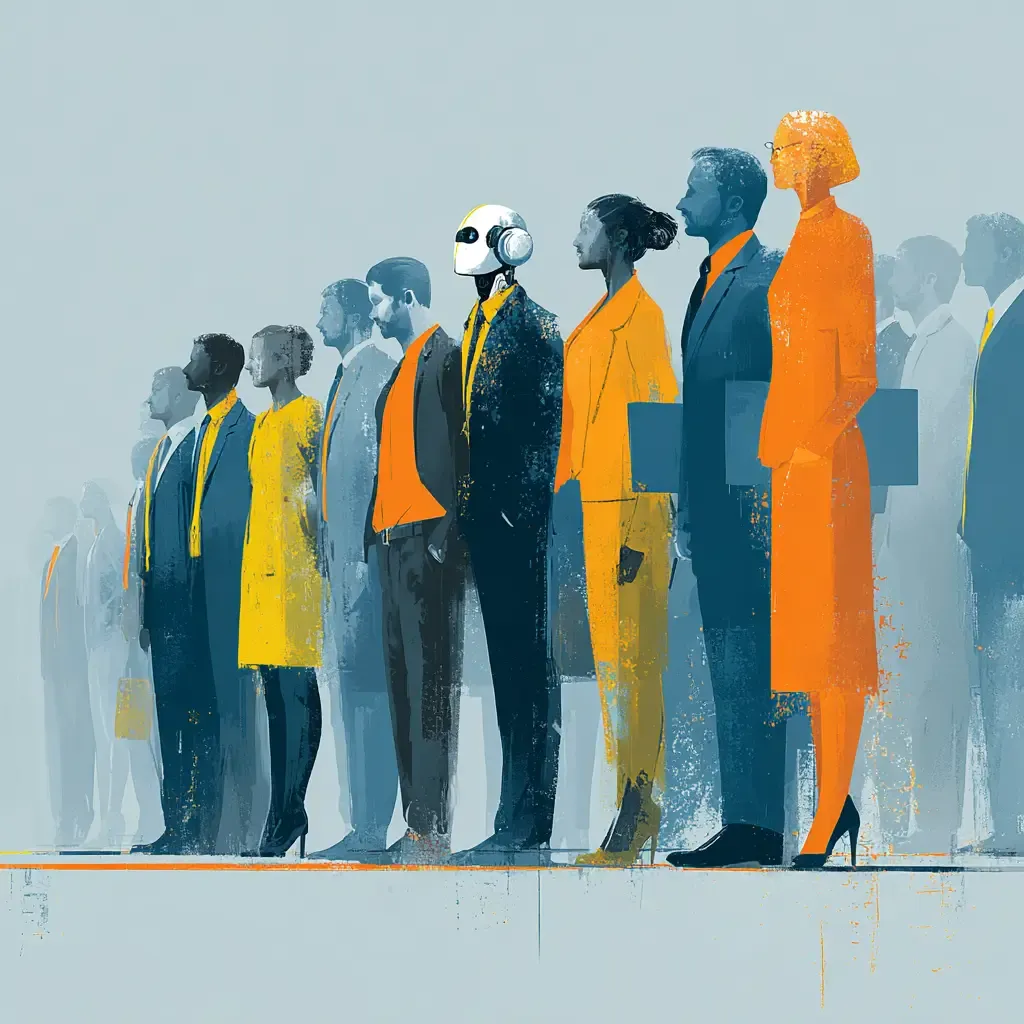NTD = Need to Drop
It started as a polite shorthand in Teams. A courteous signal that you weren’t ghosting the meeting—you were just heading to another one. Maybe a higher priority. Maybe double- or triple-booked. Maybe you were just trying to triage your day in real time.
But over time, NTD became something else: a symbol of the fractured, frantic pace of modern work. A quiet acknowledgment that nobody is really present anymore. We’re all just passing through, eyes darting between screens, ears half-tuned, minds two tabs behind.
Welcome to the Age of Attentional Bankruptcy.
The Meeting Conveyor Belt
Today’s knowledge workers don’t attend meetings—they ride them.
Meetings start before the last one ends. You leave one call with half-formed notes, shift context mid-sentence, and land in the next video square just in time to say “Hey, just joined. Catch me up?”
Meanwhile, you’re scrolling through emails, checking DMs, and watching the Copilot summary from a meeting you already had to leave. You’re not absent, exactly—but you’re not there either. You're managing presence like bandwidth. And it’s maxed out.
The most dangerous part? We’ve normalized it. We wear it like a badge of honor. Look how many meetings I can juggle. Look how fast I can switch. Look how efficient I am.
But none of this is efficient. It’s just fast. And there’s a difference.
Copilot Will Remember That (But You Won’t)
It’s tempting to lean on tools like Copilot, Otter.ai, or Notion AI to catch what we miss. And sometimes, they’re helpful. But too often, they become a crutch—one that hides how little we’re actually absorbing.
Meeting recaps are a nice idea, but they’re only as good as the prompt or summary. Action items get mangled. Tone gets flattened. Nuance disappears. And when you're relying on AI to substitute for attention, you’re not delegating—you’re dissociating.
Let’s be honest: “Catching up” via summary isn’t catching up at all. It’s skipping the movie and reading the plot on Wikipedia.
The Hidden Costs of Always On
Here’s what we rarely say out loud: the more we bounce, the more we break.
When you’re constantly toggling between meetings, messages, and AI-generated scraps of meaning, you’re not just fatigued—you’re cognitively compromised. Attention becomes brittle. Communication turns transactional. Expectations go misaligned.
This isn’t just about burnout. It’s about underperformance. When people don’t know what’s truly needed from them—because nobody stayed long enough to define it—projects stall. Misunderstandings compound. Engagement plummets.
NTD isn’t just a calendar maneuver. It’s a red flag.
Engagement as an Exhaustible Resource
Let’s stop pretending engagement is infinite.
Every time you context switch, you burn a little fuel. Every time you drop out of a meeting to join another—and try to skim notes from two more—you’re spreading yourself thinner. Engagement isn’t a light switch. It’s a finite resource. And right now, we’re overdrafting our accounts.
Worse, our systems reward it. You look busy. You’re “visible.” You’re reacting quickly. But the actual work—the real insight, the clear decision, the thoughtful plan—gets drowned in a tide of partial presence.
The result? A workplace full of people who are busy but not effective. Responsive but not reflective. Present but not engaged.
The Myth of the Perfect Multitasker
There’s a persistent myth in corporate life: that the best employees can multitask their way through the chaos. That they can absorb 80% of one meeting while prepping for the next and DMing a colleague.
But multitasking isn’t a skill. It’s a liability. Study after study shows that humans don’t really multitask—we task switch, rapidly and poorly. And every switch costs attention. Memory. Emotional bandwidth.
It’s not about willpower. It’s about architecture. We’ve built a work environment that requires superhuman attention spans—and then acts surprised when people short-circuit.
The Rise of the Half-Meeting
Maybe the worst outcome of all: the half-meeting.
Half the people show up. Half stay the whole time. Nobody’s clear on decisions. Nobody’s tracking context. And follow-ups, if they happen, start with “Wait, what did we decide again?”
We’ve entered a moment where meetings are increasingly less about alignment and more about catching up later. And that “later” never quite comes.
So What Do We Do?
You can’t fix the system overnight. But you can start reclaiming your attention.
Here’s how:
- Push for single-thread clarity. In meetings, say what’s needed and document it clearly. Don’t outsource everything to Copilot. It’s a tool, not a memory.
- Design drop-out protocols. If NTD is necessary, assign a proxy. Confirm how you’ll catch up—not just “I’ll read the recap.”
- Timebox transitions. Block 10 minutes between meetings whenever possible. It’s not wasted time—it’s processing time.
- Normalize opting out. If you're not critical to a decision, bow out. Encourage your teams to do the same. Every “No” creates space for better “Yeses.”
- Lead by example. If you manage people, model presence. Stay for the full meeting. Turn off distractions. Signal that engagement matters more than multitasking.
- Review your meeting audit trail. At the end of the week, ask: how many meetings added clarity? How many just produced more work?
Real Talk: My NTD Threshold
I’ve started drawing a line. If I can’t be present for 75% of a meeting, I don’t attend it. I ask for the key outcome in advance. Or I ask to join just for my part. Or I decline entirely.
It hasn’t made me invisible. It’s made me more effective. People know when I show up, I’m really there. And I know I’m contributing from clarity, not autopilot.
Final Thought
NTD is a symptom, not the disease. It’s a sign that our work culture prizes availability over effectiveness, motion over meaning.
The practitioners who thrive won’t be the ones who attend the most meetings. They’ll be the ones who protect their attention like a scarce resource—and use it like a scalpel.
In the end, presence is the real power. Everything else is noise.
ChangeGuild: Power to the Practitioner™
Frequently Asked Questions
What does 'NTD' mean in workplace chats?
NTD stands for "Need to Drop." It’s shorthand used in meetings—often on Teams or Zoom—to indicate someone must leave early for another commitment.
Why is 'NTD' culture a problem?
Frequent drop-ins and early exits fragment attention, lower meeting quality, and create confusion around decisions and action items.
How does multitasking during meetings impact productivity?
When people toggle between meetings, emails, chats, and AI-generated summaries, comprehension drops and misunderstandings increase—hurting both output and engagement.
Can tools like Copilot or Otter.ai fix this?
Not fully. While they help capture notes, they can’t replace the nuance, real-time decisions, or clarity that comes from being fully present.
What can organizations do to push back on NTD culture?
Leaders can model presence, reduce unnecessary meetings, clarify roles in advance, and encourage attention over attendance.

Feeling spread too thin? We coach change practitioners to reclaim their focus.
You don’t need another productivity app—you need better boundaries, clearer signals, and a practice that supports presence over panic. We’ve helped embedded consultants, change leads, and internal teams design work rhythms that work. If you're tired of leading change while drowning in meetings, we can help.
This post is free, and if it supported your work, feel free to support mine. Every bit helps keep the ideas flowing—and the practitioners powered. [Support the Work]









